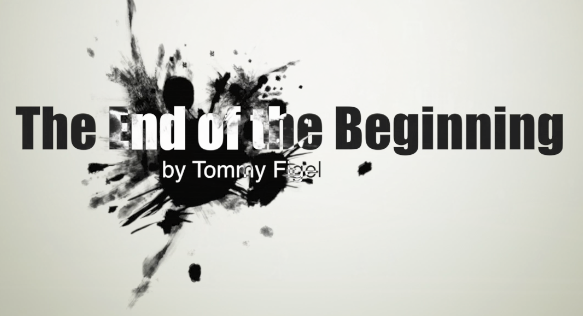Back Home
The
Past, Present and Future

.
"The End of the Beginning"
Trasncription:
Intro:
Hey guys. Today I wanted to discuss and level out the controversy in the hot debate over Chief Illiniwek. Not to tell you the rights and the wrongs of having a chief as our mascot, but the actual student activism itself and how we can use this history to make sure we don't run into this problem again.
So hopefully you know by now that Chief Illiniwek was implemented in 1926 by a student named Lester and his band teacher. It went on for decades before finally sparking significant controversy in the late 80's, and early 90's where the face of illiniwek would never be talk about the same. It was in 1990 when we really started seeing student activist groups pushing to interrupt chief and it's performances. Not just Students from native-american backgrounds but a wide array of people, neighbors, and friends. As ideas started to spread that Chief was exploiting native-american culture, the school was kind of blindsided. What all thought was honesty and integrity in representation of native american culture was far from. Native American activist, Charlene Teters brought her group to a University meeting where she spoke up about the issues in having a chief as the university symbol.
This is the first point we must note. The problem is not only the school is exploiting native american heritage, but it's the fact that they are doing so for a university that has a student body that is of majority white.
Following this meeting not much changed. However, the issue was now being heard. It just would take a lot more than one single group to overthrow a massive university. So the chief lived on...
The chief's famous half-time performance was said to be based on real tribe choreo and music. However, in an interview in the school mascot documentary "in whose honor?" a native American speaks on the discrepancies between the university's choreo and real native american choreo.
Here is the second point to be made. It's hard to argue pro-chief without acknowledging the ignorance and lack of empathy at play. When the dance and song were implemented into the Chief performance, it takes more than checking with a friend to make sure the choreo is right and honest. It is clear that more of an effort needed to have happened if the university was going to use integrity as it's argument.
Of course as word got out and talk began to stir, the dividing line began to grow. People clung onto their beloved chief even harder, and more people began to advocate for the rights and heritage of native-americans. It was in the mid 90's when we saw school officials beginning to hear the voices of those against. After much debate and cry for president Ikenberry to be anti-chief, he remained rather quiet. However it was known that he was quite pro-chief. When a bill was finally formulated by the IUB which would potentially abolish the chief as a mascot, Ikenberry hesitated to pass it, as he believed Governor Jim Edgar would veto it anyways. So he remained quiet for some time. Eventually it did go on to Governor Edgar and in June of 1995, it was decided that Chief would REMAIN as the university's mascot.
3) Though the bill wasn't passed, there is something important to note here as well. The chief controversy was gaining traction, and this is great news for anti-chief activists. This means debate has gotten big enough to start to pressuring state officials. And if there's one thing states don't like, it's heated controversy over their main state universities. This was the beginning of the end.
As a few more years went on, protests and debates continued to taint the school's name. Even nationwide controversy began taking way. However, It was in 2005 when the NCAA put its foot down. They saw the controversy was hurting their ratings. They stated "a ban on schools that use what they call "hostile and abusive American Indian nicknames" from hosting postseason games, beginning February 2006". Thus it was decided that chief would perform it's last homecoming dance as the school's official mascot in 2006.
Now before we finish, I want you to remember the three main takeaways from this great debate in order to ensure success in the future.
In making a mascot you must account for the student body at hand. Who are you're majority and minority. Not just in race, but in all areas of any voting process.
The true meaning of integrity is to do the right thing even when noone is looking. No matter how much effort must it take.
You must account for not just the universities preferences, but the nation and world as a whole. The world has its eyes on you, especially in today's world, so any next moves must have not only the school in mind, but the rest of society.
This leaves me on a question all of us are probably asking. What will the university's next steps, if any. Please proceed to the next and final page to hear my closing statement on the future of the University of Illinois's mascot.
Video Description
____________
In this Video, you will learn about the historic debates and meetings that led up to the abolishment of Chief Illiniwek. Tommy takes his own spin on what the history of the Chief can tell us about where we might be heading.
